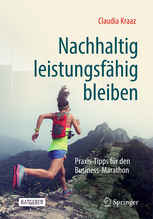THE STRESS-FREE APPROACH TO RELAXATION
Most of us lead hectic lives – with numerous appointments, projects, deadlines, etc. As a result, it is important to take a break from time to time and relax. This is the only way we can continue to function properly. However, we sometimes become really stressed because we put ourselves under pressure to regularly do something to relax. Today, I will therefore give you a few tips on how to relax effectively for short periods of time.
Meditation, yoga, progressive muscle relaxation, autogenic training: Relaxation methods are very popular – and not without good reason. Our hectic daily lives mean that we are tense and increasingly stressed. In this context, it is important to know that there are two different ways of relieving stress: 1) You can work on the stress triggers (whether they are external or ‘self-inflicted’), and 2) You can reduce the stress that has built up. My blog tends to be devoted to stress triggers. Today, however, I am focusing on the topic of relaxation.
The problem we frequently face is: How can we find time for relaxation? The ideal solution would be to do 30 minutes of meditation each day and then do sports at least three times per week. However, I must confess that I don’t manage this in my own daily life, which is sometimes hectic since I work on an 80% basis and have two young children.
Short and simple
The fact is: you can’t function properly if you don’t recharge your batteries! So what are the alternatives to the stress of trying to relax that I describe above? The answer is to incorporate short breaks into your daily routine. Here are a few ideas on how you can relax for brief periods of time:
Remember pleasant moments: Close your eyes and think of something nice, such as your family or your partner, your last vacation, a sunny day at the seaside, etc. – and use all of your senses! This relaxes the nervous system and triggers the release of happiness hormones.
Guided meditation: Many people find it very difficult to clear their minds and not think of anything (I am no exception). However, you could try guided meditation, which will take you somewhere wonderful for a few minutes (this goes somewhat further than the first point). I particularly like the guided mediation ‘The Forest’: http://media.dartmouth.edu/~healthed/imagery_the_forest.mp3. It only takes a few minutes.
Mindfulness exercises: Place a small object (anything will do) on a table in front of you and look at it, using all of your attention. This will clear your mind.
Singing: Either softly or at the top of your voice – and any kind of music will do: When we sing, the hormone oxytocin is released in the body, creating a sense of happiness. Breathing becomes deeper, and our circulation improves.
Laughter: When we feel happy, we laugh – but laughter can also make us feel happy. Research into the functioning of the brain has shown that when we laugh, our stress hormone levels and blood pressure fall and the immune system is given a boost. It is up to you what you laugh about – we are all different …
Stretching: After stretching, you feel less stiff and drained. This improves your circulation and gives you more energy.
Frown: This is a special kind of stretching. Frown as hard as you can and then raise your eyebrows as far as possible. This relaxes your forehead.
Eye relaxation: Rub both of your palms together until they are warm. Close your eyes and place your palms over them. Alternatively, you can close your eyes and cover them with a dark cloth and imagine you are looking at a piece of black velvet.
Neck relaxation: Stand in a relaxed position, raise your shoulders as far as possible and then allow them to drop again. Repeat this movement 10-15 times.
Streaming: Place your left hand over your navel. With the index finger of your right hand, touch the area in the center above your lips, while touching the area in the center below your lips using the middle finger of your right hand. Gently massage both points. Change hands. Next, place your right hand on your coccyx and your left hand on your navel. Massage both points. Change hands.
Walking on the spot: Stand barefoot – preferably on something soft. Allow your arms to hang loosely by your sides and walk steadily on the spot, adopting a pleasant rhythm. After a few minutes, you will begin to breathe more deeply and calmly.
Strolling: Not everyone enjoys sport – but a stroll (after lunch or dinner) is usually all that is needed. This is because exercising in the fresh air offers dual benefits. Even just spending five minutes outdoors in a place with lots of green vegetation is proven to have a positive impact on our psyche, as demonstrated by a study by the University of Essex.
Listening to music: Rhythms and melodies not only have an effect on our breathing and our pulse but also on our nerves and glands. Once again: It does not matter which type of music you listen to – it simply has to be something you enjoy.
Warm bath: A pleasantly warm bath (possibly with some fragrant essential oil) is great for tense muscles but also to relax your mind – and then it should be straight off to bed afterwards!
Do you have any other ideas? Please send an e-mail to: claudia.kraaz@stressandbalance.ch
One very effective but very simple method that I have intentionally not covered today is: Breathing. The whole of my next blog will be devoted to this topic. Look out for it three weeks from now.
© Claudia Kraaz





